Xiaohui Yan
Knowledge-Augmented Question Error Correction for Chinese Question Answer System with QuestionRAG
Nov 05, 2025Abstract:Input errors in question-answering (QA) systems often lead to incorrect responses. Large language models (LLMs) struggle with this task, frequently failing to interpret user intent (misinterpretation) or unnecessarily altering the original question's structure (over-correction). We propose QuestionRAG, a framework that tackles these problems. To address misinterpretation, it enriches the input with external knowledge (e.g., search results, related entities). To prevent over-correction, it uses reinforcement learning (RL) to align the model's objective with precise correction, not just paraphrasing. Our results demonstrate that knowledge augmentation is critical for understanding faulty questions. Furthermore, RL-based alignment proves significantly more effective than traditional supervised fine-tuning (SFT), boosting the model's ability to follow instructions and generalize. By integrating these two strategies, QuestionRAG unlocks the full potential of LLMs for the question correction task.
XTransplant: A Probe into the Upper Bound Performance of Multilingual Capability and Culture Adaptability in LLMs via Mutual Cross-lingual Feed-forward Transplantation
Dec 17, 2024Abstract:Current large language models (LLMs) often exhibit imbalances in multilingual capabilities and cultural adaptability, largely due to their English-centric pretraining data. To address this imbalance, we propose a probing method named XTransplant that explores cross-lingual latent interactions via cross-lingual feed-forward transplantation during inference stage, with the hope of enabling the model to leverage the strengths of both English and non-English languages. Through extensive pilot experiments, we empirically prove that both the multilingual capabilities and cultural adaptability of LLMs hold the potential to be significantly improved by XTransplant, respectively from En -> non-En and non-En -> En, highlighting the underutilization of current LLMs' multilingual potential. And the patterns observed in these pilot experiments further motivate an offline scaling inference strategy, which demonstrates consistent performance improvements in multilingual and culture-aware tasks, sometimes even surpassing multilingual supervised fine-tuning. And we do hope our further analysis and discussion could help gain deeper insights into XTransplant mechanism.
PReGAN: Answer Oriented Passage Ranking with Weakly Supervised GAN
Jul 05, 2022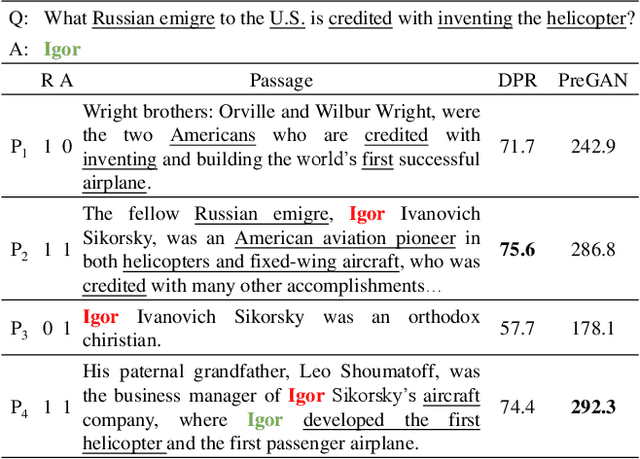

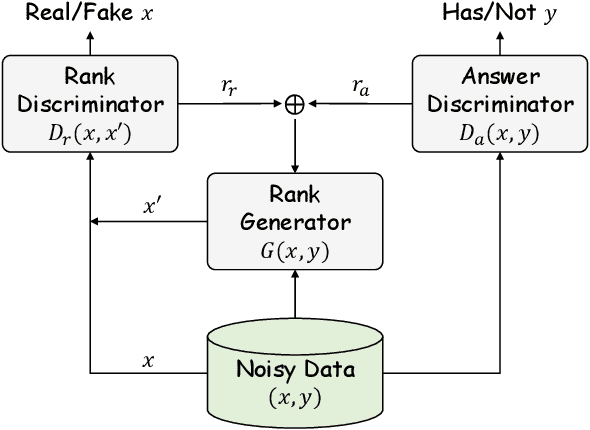
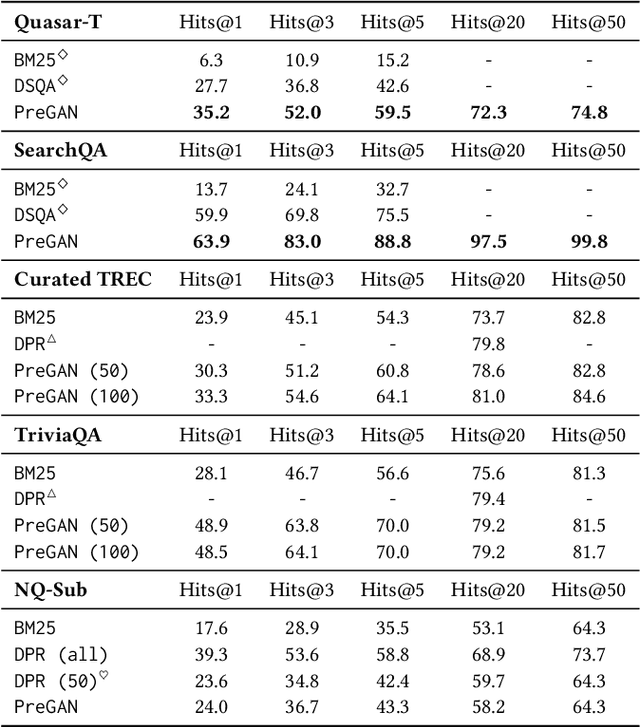
Abstract:Beyond topical relevance, passage ranking for open-domain factoid question answering also requires a passage to contain an answer (answerability). While a few recent studies have incorporated some reading capability into a ranker to account for answerability, the ranker is still hindered by the noisy nature of the training data typically available in this area, which considers any passage containing an answer entity as a positive sample. However, the answer entity in a passage is not necessarily mentioned in relation with the given question. To address the problem, we propose an approach called \ttt{PReGAN} for Passage Reranking based on Generative Adversarial Neural networks, which incorporates a discriminator on answerability, in addition to a discriminator on topical relevance. The goal is to force the generator to rank higher a passage that is topically relevant and contains an answer. Experiments on five public datasets show that \ttt{PReGAN} can better rank appropriate passages, which in turn, boosts the effectiveness of QA systems, and outperforms the existing approaches without using external data.
Variance Reduction for Deep Q-Learning using Stochastic Recursive Gradient
Jul 25, 2020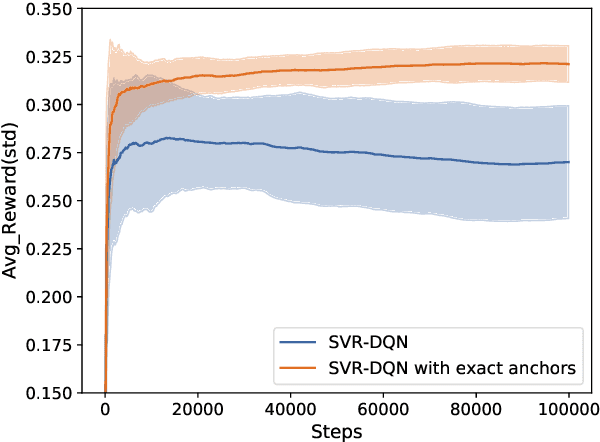
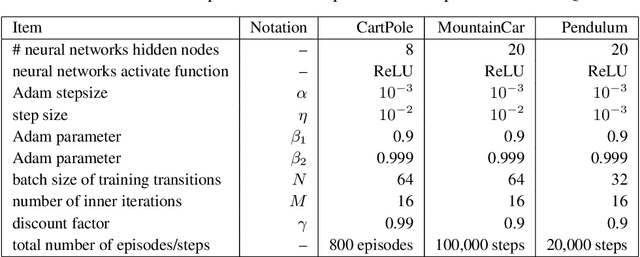


Abstract:Deep Q-learning algorithms often suffer from poor gradient estimations with an excessive variance, resulting in unstable training and poor sampling efficiency. Stochastic variance-reduced gradient methods such as SVRG have been applied to reduce the estimation variance (Zhao et al. 2019). However, due to the online instance generation nature of reinforcement learning, directly applying SVRG to deep Q-learning is facing the problem of the inaccurate estimation of the anchor points, which dramatically limits the potentials of SVRG. To address this issue and inspired by the recursive gradient variance reduction algorithm SARAH (Nguyen et al. 2017), this paper proposes to introduce the recursive framework for updating the stochastic gradient estimates in deep Q-learning, achieving a novel algorithm called SRG-DQN. Unlike the SVRG-based algorithms, SRG-DQN designs a recursive update of the stochastic gradient estimate. The parameter update is along an accumulated direction using the past stochastic gradient information, and therefore can get rid of the estimation of the full gradients as the anchors. Additionally, SRG-DQN involves the Adam process for further accelerating the training process. Theoretical analysis and the experimental results on well-known reinforcement learning tasks demonstrate the efficiency and effectiveness of the proposed SRG-DQN algorithm.
Convolutional Hierarchical Attention Network for Query-Focused Video Summarization
Feb 15, 2020



Abstract:Previous approaches for video summarization mainly concentrate on finding the most diverse and representative visual contents as video summary without considering the user's preference. This paper addresses the task of query-focused video summarization, which takes user's query and a long video as inputs and aims to generate a query-focused video summary. In this paper, we consider the task as a problem of computing similarity between video shots and query. To this end, we propose a method, named Convolutional Hierarchical Attention Network (CHAN), which consists of two parts: feature encoding network and query-relevance computing module. In the encoding network, we employ a convolutional network with local self-attention mechanism and query-aware global attention mechanism to learns visual information of each shot. The encoded features will be sent to query-relevance computing module to generate queryfocused video summary. Extensive experiments on the benchmark dataset demonstrate the competitive performance and show the effectiveness of our approach.
Generative Question Refinement with Deep Reinforcement Learning in Retrieval-based QA System
Aug 27, 2019


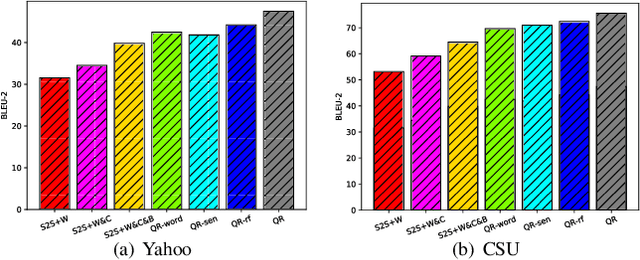
Abstract:In real-world question-answering (QA) systems, ill-formed questions, such as wrong words, ill word order, and noisy expressions, are common and may prevent the QA systems from understanding and answering them accurately. In order to eliminate the effect of ill-formed questions, we approach the question refinement task and propose a unified model, QREFINE, to refine the ill-formed questions to well-formed question. The basic idea is to learn a Seq2Seq model to generate a new question from the original one. To improve the quality and retrieval performance of the generated questions, we make two major improvements: 1) To better encode the semantics of ill-formed questions, we enrich the representation of questions with character embedding and the recent proposed contextual word embedding such as BERT, besides the traditional context-free word embeddings; 2) To make it capable to generate desired questions, we train the model with deep reinforcement learning techniques that considers an appropriate wording of the generation as an immediate reward and the correlation between generated question and answer as time-delayed long-term rewards. Experimental results on real-world datasets show that the proposed QREFINE method can generate refined questions with more readability but fewer mistakes than the original questions provided by users. Moreover, the refined questions also significantly improve the accuracy of answer retrieval.
Learning Representation Mapping for Relation Detection in Knowledge Base Question Answering
Jul 17, 2019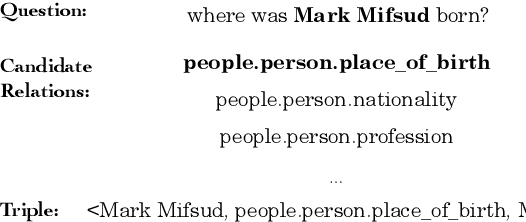

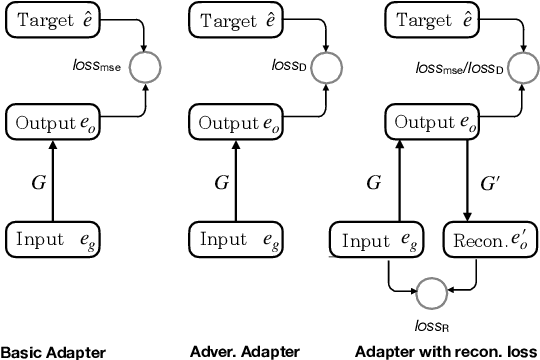

Abstract:Relation detection is a core step in many natural language process applications including knowledge base question answering. Previous efforts show that single-fact questions could be answered with high accuracy. However, one critical problem is that current approaches only get high accuracy for questions whose relations have been seen in the training data. But for unseen relations, the performance will drop rapidly. The main reason for this problem is that the representations for unseen relations are missing. In this paper, we propose a simple mapping method, named representation adapter, to learn the representation mapping for both seen and unseen relations based on previously learned relation embedding. We employ the adversarial objective and the reconstruction objective to improve the mapping performance. We re-organize the popular SimpleQuestion dataset to reveal and evaluate the problem of detecting unseen relations. Experiments show that our method can greatly improve the performance of unseen relations while the performance for those seen part is kept comparable to the state-of-the-art. Our code and data are available at https://github.com/wudapeng268/KBQA-Adapter.
Zero-shot User Intent Detection via Capsule Neural Networks
Sep 02, 2018

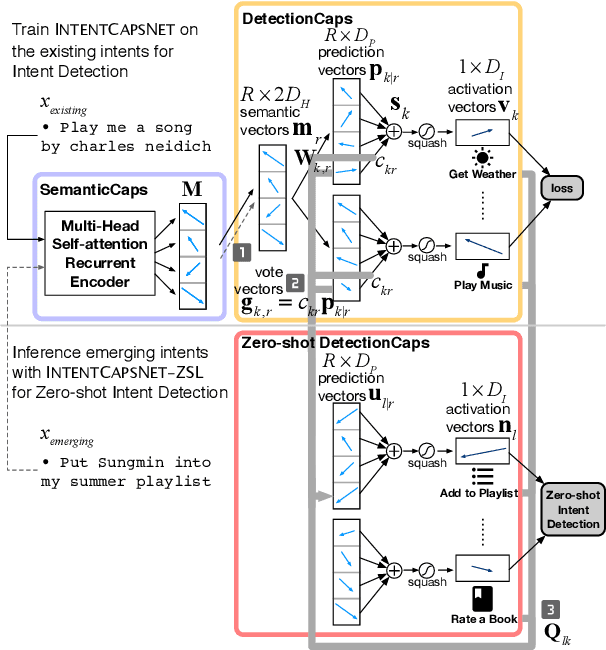
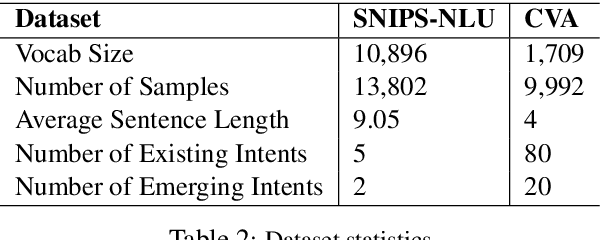
Abstract:User intent detection plays a critical role in question-answering and dialog systems. Most previous works treat intent detection as a classification problem where utterances are labeled with predefined intents. However, it is labor-intensive and time-consuming to label users' utterances as intents are diversely expressed and novel intents will continually be involved. Instead, we study the zero-shot intent detection problem, which aims to detect emerging user intents where no labeled utterances are currently available. We propose two capsule-based architectures: INTENT-CAPSNET that extracts semantic features from utterances and aggregates them to discriminate existing intents, and INTENTCAPSNET-ZSL which gives INTENTCAPSNET the zero-shot learning ability to discriminate emerging intents via knowledge transfer from existing intents. Experiments on two real-world datasets show that our model not only can better discriminate diversely expressed existing intents, but is also able to discriminate emerging intents when no labeled utterances are available.
 Add to Chrome
Add to Chrome Add to Firefox
Add to Firefox Add to Edge
Add to Edge